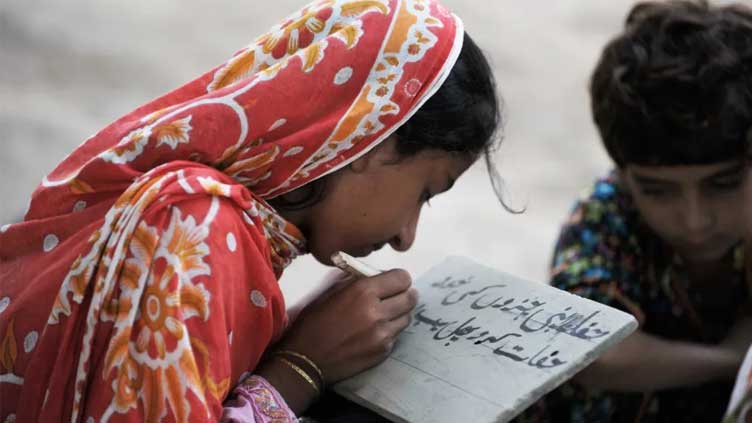
More than 20m Pakistani children are still out of school: report
LAHORE (Dunya News) – More than 20 million children in the country are out of school as Pakistan and other countries around the world are observing “International Education day” on January 24.
In wake of reminding us that without inclusive and equitable quality learning for all, countries will not succeed in breaking the cycle of poverty that is leaving millions of children and their families behind. In December last year, the United Nations General Assembly proclaimed every year on 24 January as International Day of Education in celebration of the role of learning for peace and development.
According to UNICEF, today, 262 million children and youth still do not attend school across the globe. When they are in school, they do not always access quality education — 617 million children and adolescents cannot read and do basic math.
Quality education includes learners who are healthy, well-nourished and ready to participate and learn, and supported in learning by their families and communities.
While In Pakistan, 23 million children aged 5-16 remain out of school — 44 percent of the total population in this age group. The country has the world’s second-highest number of out-of-school children (OOSC) at the primary level, with five million children aged 5-9 not attending school. After primary-school age, the number of OOSC doubles, with 11 million adolescents between the ages of 10-14 not receiving formal education.
Children who are in school in Pakistan are not always learning. The 2016 National Education Assessment Report shows that a sizeable proportion of students scored below the acceptable minimum levels for core subjects.
According to Economic Survey 2022, the literacy rate in Pakistan is around 63% Economic Survey shows the literacy rate at around 63pc. Literacy rates increased in both rural (53.7pc to 54.0pc) and urban areas (76.1pc to 77.3pc).
The report also stated that the gender gap appears to be closing over time. “Literacy rate went up in all provinces, Punjab (66.1pc to 66.3pc), Sindh (61.6pc to 61.8pc), Khyber Pakhtunkhwa (52.4pc to 55.1pc) and Balochistan (53.9pc to 54.5pc)," read the survey. While highlighting the literacy rate, the survey said that during 2021-22, the Pakistan Social and Living Standards Measurement survey was not conducted due to the upcoming Population and Housing Census 2022. Therefore, the survey stated that figures for the latest available survey regarding Gross Enrolment Rate (GER) and Net Enrolment Rate (NER) may be considered for the analysis.
“However, according to the Labour Force Survey 2020-21, literacy rate trends show 62.8pc in 2020-21 (as compared to 62.4pc in 2018-19), more in males (from 73.0pc to 73.4pc) than females (from 51.5pc to 51.9pc)," read the survey.
Courtesy: Published at Dunya News on January 24, 2023
